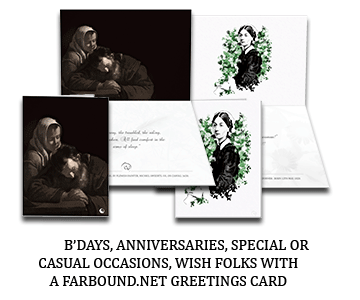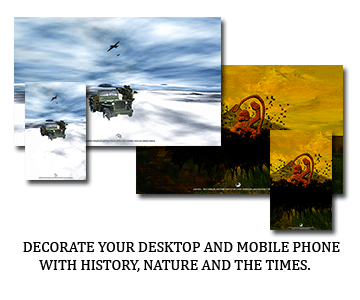An interesting fact regarding the representation of Gautama Siddhartha in art or stone is that no sculpture or painting to come out of ancient times truly does justice to what the great sage may indeed have looked like as a human being.
For the simple reason that for many years after the death of the great sage, he was represented with signs and symbols that alluded to his birthmarks alone, and when the time had finally come to cast his image with the chisel and the hammer, no living being could recall what he actually looked like.
Even when trying to make an educated guess out of a scanty set of clues ingrained in old Buddhist scriptures, which in the first place was never enough to put together the real face of the Buddha.
This striking point, no matter how significant it may seem to us modern-day humans, however, never posed much of an inconvenience for artists and sculptors of the ancient world.
Who when tasked with portraying the Buddha in human form had embraced their artistic liberty to represent him with the physiognomy of the people they saw around them every day, and in the process, lend the sage vastly different appearances, and in spite of producing him with what one can hopefully assume were his birthmarks.
Though this artistic liberty clearly comes to the fore best in the works of the ancient Tibetan artisans, who in truth can be said to be responsible for the Buddha’s popular present-day oriental lineaments.
Which they, the Tibetan artisans, created as a part of a grand scheme to revive and promote the faith of Buddhism in its sanctuary of Tibet, after the religion had nearly been obliterated in the land of its birth. First throttled by its parent religion of Hinduism during one of her most intense phases of revival and later by Islam.
The trend of casting the Buddha in human form, however, was not an invention of the Tibetans at all, but of the more ancient people of Gandhara.

Wallpapers by Farbound.Net
Dimensions: 1902 x 1200 pixels.
Gandhara was a rugged region of what is today North West Pakistan and Eastern Afghanistan, and which in historic times was a much-contested land due to its strategic location at the crossroads of Asia. It was conquered and settled in turn by the Indo-Vedic tribe known as the Druhyus, followed by the Greeks, the Mauryans, the Parthians, the Sakas, and finally the Kushans.
The Kushans were a people who had started off as a nomadic clan of horse archers somewhere in the region of China, then, with the passage of time, had grown in power to conquer and consolidate. They were originally known as the Yuehzi.

Kujula Kadphises, a chieftain of a Yuehzi tribe, had extended his sway over other Yuehzi tribes to become the first Kushan king. Later, under successive leaders, the Kushans had defeated the Sakas and Indo-Parthians, and by the middle of the first century CE, were in control of Gandhara.
The Kushan kings were great patrons of the arts, and were instrumental in promoting and setting in precedence many of the art forms that were to later flourish, and which, not surprisingly, had resulted in the emergence of several innovations, such as the standing sculpture of the Buddha in the photo.
Created in the vicinity of the 2nd century CE, when the Kushans reigned supreme from their twin capitals of Mathura, now in the present-day state of Uttar Pradesh in India and Taxila, present-day Rawalpindi district, in Pakistan, the statue is unique for not only being among the first to represent the Buddha in human form but also for its chiselled Greco-Roman appearance.
Beautifully sculpted out of a block of black schist stone, and which speaks volumes of the skills of the Gandharan sculptors, the sculpture presents the Buddha dressed in a Hellenistic-style flowing robe and with the youthful face of the Greek deity, Apollo, and with his defining birthmarks.
Originally, the sculpture would have also been painted and gilded.

Greetings Cards by Farbound.Net
Dimensions: 1200 x 1203 pixels.
Why classical Greco-Roman styles came to grow roots among a people living far away from classical Europe was largely because of the strategic location of Gandhara and its importance as a trading centre. Situated on the crossroad of Asia, Gandhara was the beneficiary of trade routes linking the Mediterranean to China and South Asia. It was a melting pot of skills and ideas, and which in turn had brought about its prosperity and shaped its artistic vigour.
By the time the Kushans had wrested control of Gandhara, sculptors of the region were already exposed to over 500 years of Hellenistic and Roman traditions. Unveiled to them by Alexander’s invasion in 330 BCE. Over the centuries, their art had taken on an international character and brought about an indigenous classical Gandharan tradition of presenting cultural ideas in classical Greco-Roman form.
In the case of the Buddha sculptures, it was a fusion of Buddhist ideologies that had arrived from North India and classical Greco-Roman art.
The sculpture is a testament to not just how the Gandharan artisans started the trend of creating the Buddha in styles they were most comfortable and skilled with, but also of an East and West cultural fusion.
One that had grown roots after Alexander’s invasion, grown under the Seleucids and blossomed under the banners of the culturally different empires of the Mauryans, the Parthians and the Kushans, with not one of these powers seeing a need to suppress or change the art with more native forms.
The sculpture belongs to the Greco-Buddhist genre of art, which flourished for nearly a thousand years in Central Asia, and was unique for its unusual mix of classical Greek craftsmanship and Buddhist ideologies.
I F I The sculpture featured in this story is on exhibit at the National Museum in Delhi.I







